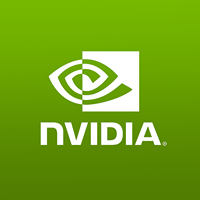Nvidia's GeForce RTX 5000 Series: A Leap into the Future of Gaming and AI
January 8, 2025, 9:51 pm
Nvidia has once again set the stage ablaze with its latest unveiling at CES 2025. The GeForce RTX 5000 series is not just a new line of graphics cards; it’s a bold statement about the future of gaming and artificial intelligence. With the RTX 5090 leading the charge, Nvidia promises a revolution in performance, efficiency, and capabilities.
The RTX 5000 series introduces four new models: the RTX 5090, RTX 5080, RTX 5070 Ti, and RTX 5070. Each card is a stepping stone into a new era of gaming technology. The RTX 5090, priced at $1,999, boasts a staggering 32 GB of GDDR7 VRAM and a bandwidth of 1,792 GB/s. This is a 78% increase over its predecessor, the RTX 4090. With 21,760 CUDA cores, it’s designed to handle the most demanding gaming scenarios and AI tasks with ease.
The architecture behind this leap is called Blackwell. It’s a name that signifies not just power but also efficiency. Nvidia claims the RTX 5090 is twice as fast as the RTX 4090. Yet, it comes with a hefty power requirement of 575 watts. However, the Blackwell architecture aims to keep energy consumption in check, ensuring that users won’t always hit that maximum threshold.
The RTX 5080 follows closely, priced at $999. It features 16 GB of GDDR7 VRAM and 10,572 CUDA cores. Nvidia markets it as twice as fast as the RTX 4080, a claim that underscores the competitive nature of this new generation. The RTX 5070 Ti and RTX 5070 round out the lineup, catering to gamers looking for performance without breaking the bank.
But the excitement doesn’t stop at raw power. Nvidia has integrated its fourth generation of Deep Learning Super Sampling (DLSS) technology into these cards. This means gamers can expect smoother frame rates and enhanced visuals, thanks to AI-driven rendering techniques. The RTX 5000 series is designed to multiply gaming frame rates by up to eight times, making it a game-changer for competitive players.
The new GPUs are not just about gaming. Nvidia is positioning them as tools for AI research and development. The RTX 5090 can perform 3,352 trillion AI operations per second, making it suitable for running complex AI models. This dual-purpose capability blurs the lines between gaming and professional applications, opening doors for developers and researchers alike.
In addition to the GPUs, Nvidia introduced Project DIGITS, a personal AI supercomputer aimed at researchers and students. This powerhouse features the GB10 Grace Blackwell superchip, combining a GPU with a 20-core CPU. It’s designed to handle large language models and complex computations, making it a valuable asset for anyone in the AI field.
Nvidia also showcased advancements in robotics. The GR00T AI model for humanoid robots now includes a learning-by-imitation feature. This allows robots to mimic human movements, enhancing their utility in manufacturing and logistics. The potential applications are vast, promising to revolutionize industries worth trillions.
The partnership with Toyota to develop next-generation autonomous vehicles further emphasizes Nvidia’s commitment to AI. By integrating its DRIVE AGX Orin supercomputer into Toyota’s models, Nvidia is paving the way for smarter, safer vehicles. This collaboration is a testament to the growing importance of AI in the automotive sector.
However, not all news is rosy. The price increases across the RTX 5000 series have raised eyebrows. The RTX 5090 is $400 more than the RTX 4090, and while the performance gains are significant, consumers are left to weigh the cost against the benefits. The RTX 5080’s price drop is a rare exception, hinting at Nvidia’s strategy to attract a broader audience.
The arrival of laptops equipped with the RTX 5000 series is also on the horizon. Major manufacturers like Acer, ASUS, and Dell are set to release devices featuring these powerful GPUs by March. This will bring the capabilities of the RTX 5000 series to mobile platforms, allowing gamers and professionals to harness this power on the go.
In conclusion, Nvidia’s GeForce RTX 5000 series is a bold leap into the future. With its powerful GPUs, innovative AI capabilities, and strategic partnerships, Nvidia is not just shaping the gaming landscape but also redefining the role of AI in our lives. The RTX 5000 series is more than just a product launch; it’s a glimpse into a future where gaming and AI coexist, driving advancements across multiple industries. As we stand on the brink of this new era, one thing is clear: Nvidia is leading the charge, and the world is watching.
The RTX 5000 series introduces four new models: the RTX 5090, RTX 5080, RTX 5070 Ti, and RTX 5070. Each card is a stepping stone into a new era of gaming technology. The RTX 5090, priced at $1,999, boasts a staggering 32 GB of GDDR7 VRAM and a bandwidth of 1,792 GB/s. This is a 78% increase over its predecessor, the RTX 4090. With 21,760 CUDA cores, it’s designed to handle the most demanding gaming scenarios and AI tasks with ease.
The architecture behind this leap is called Blackwell. It’s a name that signifies not just power but also efficiency. Nvidia claims the RTX 5090 is twice as fast as the RTX 4090. Yet, it comes with a hefty power requirement of 575 watts. However, the Blackwell architecture aims to keep energy consumption in check, ensuring that users won’t always hit that maximum threshold.
The RTX 5080 follows closely, priced at $999. It features 16 GB of GDDR7 VRAM and 10,572 CUDA cores. Nvidia markets it as twice as fast as the RTX 4080, a claim that underscores the competitive nature of this new generation. The RTX 5070 Ti and RTX 5070 round out the lineup, catering to gamers looking for performance without breaking the bank.
But the excitement doesn’t stop at raw power. Nvidia has integrated its fourth generation of Deep Learning Super Sampling (DLSS) technology into these cards. This means gamers can expect smoother frame rates and enhanced visuals, thanks to AI-driven rendering techniques. The RTX 5000 series is designed to multiply gaming frame rates by up to eight times, making it a game-changer for competitive players.
The new GPUs are not just about gaming. Nvidia is positioning them as tools for AI research and development. The RTX 5090 can perform 3,352 trillion AI operations per second, making it suitable for running complex AI models. This dual-purpose capability blurs the lines between gaming and professional applications, opening doors for developers and researchers alike.
In addition to the GPUs, Nvidia introduced Project DIGITS, a personal AI supercomputer aimed at researchers and students. This powerhouse features the GB10 Grace Blackwell superchip, combining a GPU with a 20-core CPU. It’s designed to handle large language models and complex computations, making it a valuable asset for anyone in the AI field.
Nvidia also showcased advancements in robotics. The GR00T AI model for humanoid robots now includes a learning-by-imitation feature. This allows robots to mimic human movements, enhancing their utility in manufacturing and logistics. The potential applications are vast, promising to revolutionize industries worth trillions.
The partnership with Toyota to develop next-generation autonomous vehicles further emphasizes Nvidia’s commitment to AI. By integrating its DRIVE AGX Orin supercomputer into Toyota’s models, Nvidia is paving the way for smarter, safer vehicles. This collaboration is a testament to the growing importance of AI in the automotive sector.
However, not all news is rosy. The price increases across the RTX 5000 series have raised eyebrows. The RTX 5090 is $400 more than the RTX 4090, and while the performance gains are significant, consumers are left to weigh the cost against the benefits. The RTX 5080’s price drop is a rare exception, hinting at Nvidia’s strategy to attract a broader audience.
The arrival of laptops equipped with the RTX 5000 series is also on the horizon. Major manufacturers like Acer, ASUS, and Dell are set to release devices featuring these powerful GPUs by March. This will bring the capabilities of the RTX 5000 series to mobile platforms, allowing gamers and professionals to harness this power on the go.
In conclusion, Nvidia’s GeForce RTX 5000 series is a bold leap into the future. With its powerful GPUs, innovative AI capabilities, and strategic partnerships, Nvidia is not just shaping the gaming landscape but also redefining the role of AI in our lives. The RTX 5000 series is more than just a product launch; it’s a glimpse into a future where gaming and AI coexist, driving advancements across multiple industries. As we stand on the brink of this new era, one thing is clear: Nvidia is leading the charge, and the world is watching.



